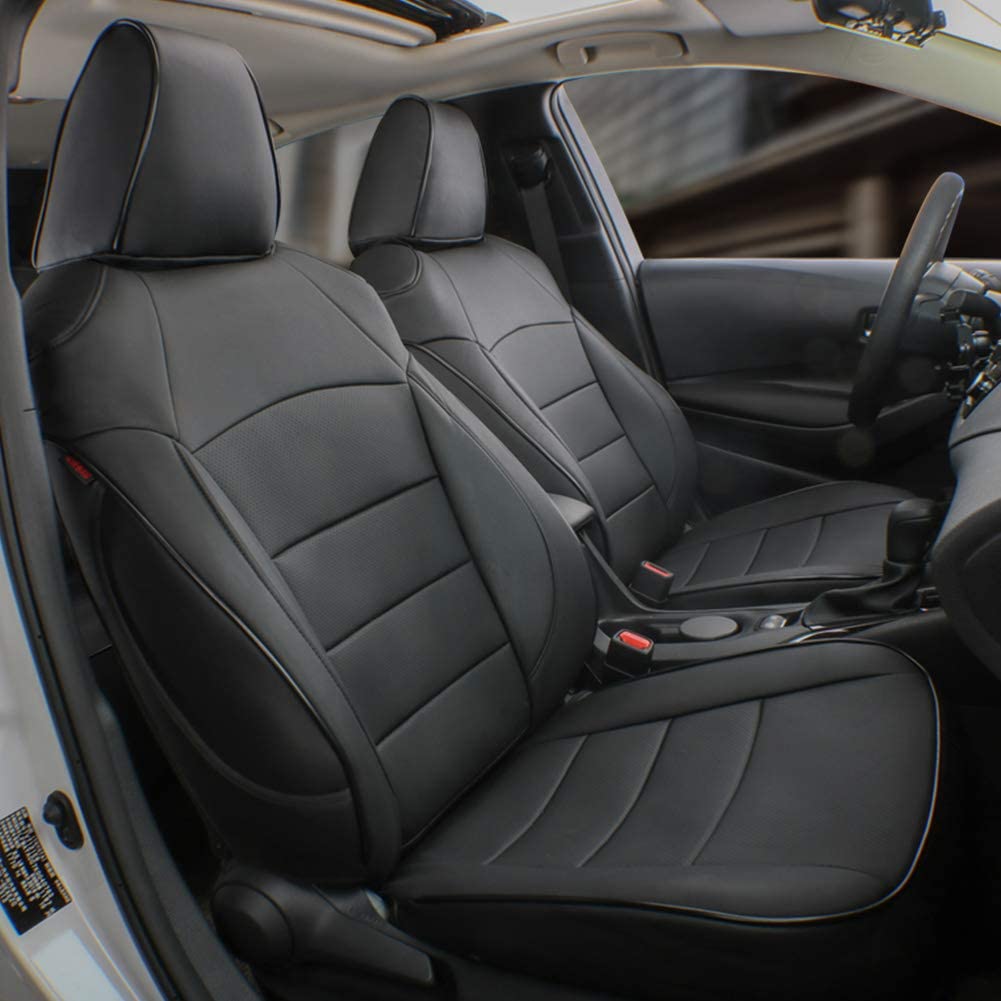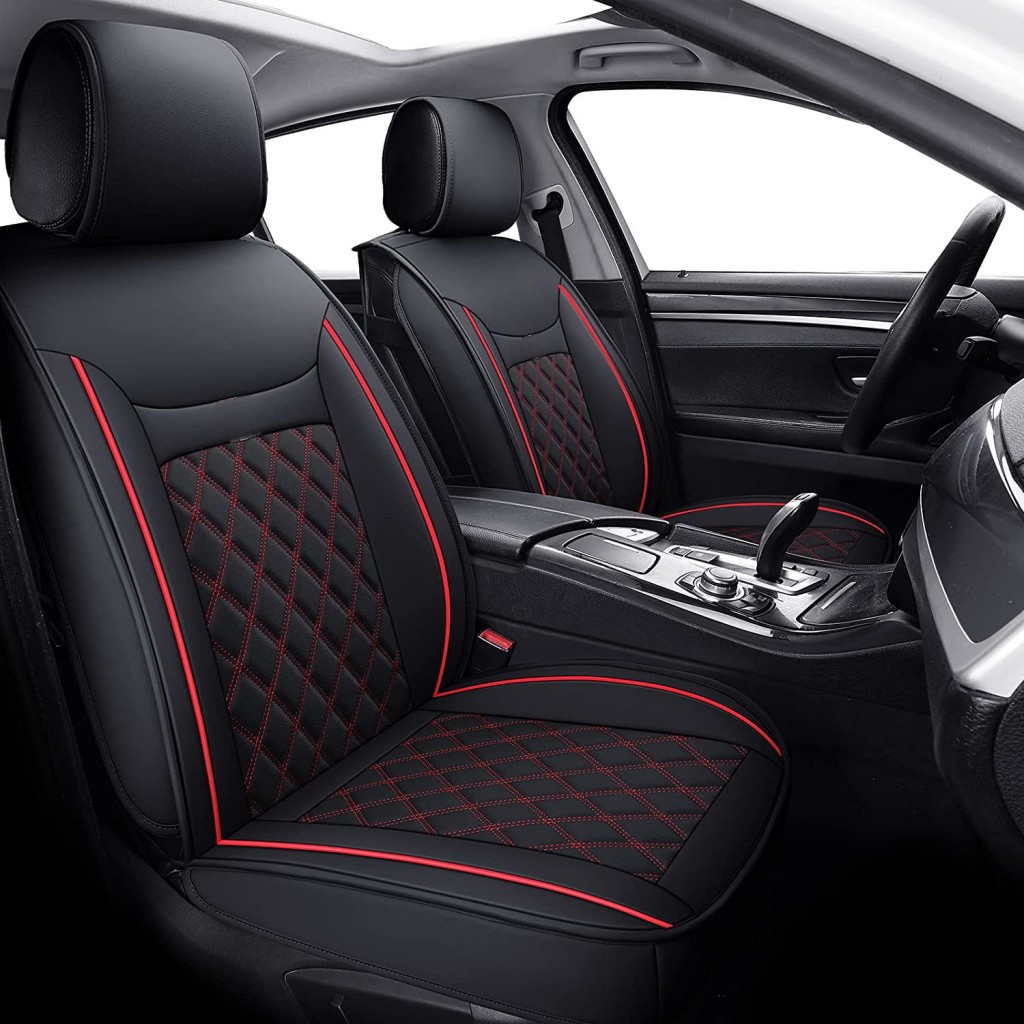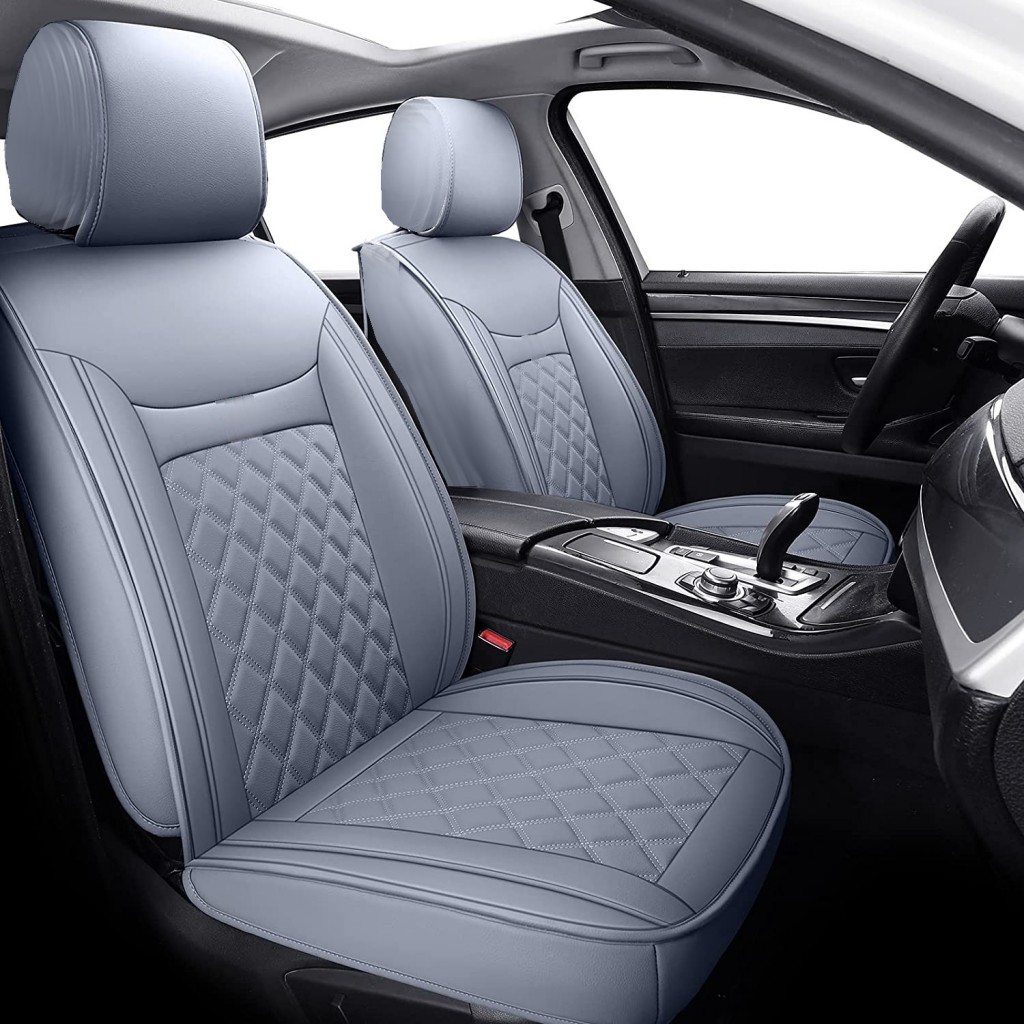Benefits of Leather Car Seat Covers
Leather car seat covers offer numerous advantages for vehicle owners seeking comfort, style, and durability. Here’s a look at some of the top benefits:
- Style and Elegance: Upgrading to leather car seat covers can instantly elevate the interior look of your vehicle. The sleek and sophisticated appearance adds a touch of luxury that fabric seats can’t match.
- Durability: Leather is well-known for its strength and longevity. Leather car seat covers are resistant to tears and daily wear and tear, making them a smart investment for long-term use.
- Easy to Clean: Spills and stains can be wiped off easily from leather surfaces. This convenience makes leather seat covers ideal for those with children or pets.
- Comfort: Leather seats are comfortable to sit on. In both hot and cold weather, they offer a more stable and pleasant surface temperature compared to fabric covers.
- Resale Value: Cars fitted with leather seats often attract a higher resale value. Leather interiors are highly sought after and can contribute to a better return on your investment.
- Allergy-Friendly: Leather does not hold dust mites or pet dander as fabric does. This can make the driving environment healthier for allergy sufferers.
Choosing leather car seat covers means opting for a blend of practicality and luxury that enhances your driving experience. Remember to balance the benefits with your personal needs and preferences to make the best choice for your vehicle.

Types of Leather Material for Car Seat Covers
When shopping for leather car seat covers, you’ll encounter various types of leather materials. Each type offers different textures, durability levels, and care requirements. Common types include:
- Genuine Leather: This is made from real animal hide. It’s top-grade, durable, and has a unique grain pattern.
- PU Leather (Polyurethane Leather): PU leather is a synthetic material that looks like real leather. It’s more affordable and easier to maintain but less durable.
- PVC Leather (Polyvinyl Chloride Leather):It’s waterproof and stands up well against wear but may lack breathability.
- Bonded Leather: Bonded leather is made from shreds of real leather bonded together. It’s the least expensive and eco-friendlier as it recycles leather scraps.
- Full-Grain Leather: Full-grain leather is high-quality and includes the hide’s natural grain. It’s tough and can develop a patina over time.
- Top-Grain Leather: This kind of leather has its surface slightly sanded. It’s more pliable and has a uniform look compared to full-grain.
When choosing leather car seat covers, consider how each material will match your car’s use and your preferences. Durability, comfort, and maintenance needs are key factors that should guide your choice.
Essential Features to Look for in Leather Seat Covers
When selecting leather car seat covers, certain features are crucial for comfort, durability, and overall satisfaction. Here are the key features to consider:
- Fit and Compatibility: Ensure the covers match your car’s specific model and seat design for a snug fit.
- Material Quality: Look for high-grade materials like genuine or top-grain leather for longevity.
- Comfort Factors: Choose covers with padding or additional cushioning for extra comfort during long drives.
- Ease of Installation: Opt for seat covers that come with clear instructions and can be installed without professional help.
- UV Protection: To prevent fading, find covers treated with UV protectants.
- Color Fastness: The color should not transfer to clothing or fade quickly. Check for high-quality dyeing processes.
- Aesthetic Appeal: Consider the style and color that complement your car’s interior.
- Ventilation: Good breathability is important, especially in warm climates, to keep the seats cool.
By focusing on these essential features, leather car seat covers will not only enhance the beauty of your car’s interior but also offer practical benefits.

Step-by-Step Installation Guide for Leather Car Seat Covers
Installing leather car seat covers can transform your vehicle’s interior quickly and effectively. Here’s a simple guide to help you through the process:
- Choose the Right Size: Before anything, make sure the leather car seat covers you’ve selected fit your car’s seats.
- Clean Your Seats: Get rid of any dirt or debris. A clean surface ensures better adherence.
- Remove Headrests: Take off any headrests to allow the covers to slip on smoothly.
- Align the Cover: Place the cover over the seat and align it with the seat’s contours.
- Secure Straps and Buckles: Fasten any straps or buckles that come with the cover, ensuring a tight fit.
- Smooth Out Wrinkles: Adjust the cover by smoothing out folds and wrinkles for a sleek appearance.
- Reattach the Headrests: Once the covers are fitted, put back the headrests if applicable.
- Final Adjustments: Double-check all straps and buckles and make final adjustments as needed.
- Enjoy Your New Seats: Sit back and enjoy the luxurious feel of your new leather car seat covers.
Following these steps will ensure that your leather car seat covers are installed properly, providing a refreshing new look and feel to your car’s interior. Remember to refer to the specific instructions provided with your seat covers, as some models may have additional steps or require different methodologies.

Maintenance and Care for Leather Seat Covers
Proper maintenance and care are essential to keep leather car seat covers looking their best. Here’s how to maintain your leather seats effectively:
- Regular Cleaning: Use a soft cloth to dust off your seats regularly. For deeper cleans, apply a mild leather cleaner.
- Conditioning: Every few months, treat the leather with a conditioner. This keeps it supple and prevents cracks.
- Avoid Excessive Water: If spills occur, blot them up immediately. Don’t soak leather, as it can damage the material.
- Keep Sharp Objects Away: Avoid placing sharp items on leather seats to prevent punctures or tears.
- Utilize Sun-Protection Measures: Where possible, park in the shade or use a car cover. Sunlight can fade and damage leather over time.
- Address Stains Quickly: Act fast on any stains with a targeted leather stain remover.
- Professional Help for Tough Stains: For stubborn stains or damage, seek professional cleaning services.
Consistent care will extend the life and appearance of your leather car seat covers, ensuring they provide lasting comfort and style for your vehicle.

Comparing Leather Seat Covers vs. Fabric
When it comes to selecting car seat covers, the leather versus fabric debate is never-ending. Both materials have their unique pros and cons that cater to different needs and preferences. Here is a comparison of leather car seat covers with their fabric counterparts to help you make an informed decision:
- Durability: Leather car seat covers often outlast fabric ones due to their robust nature. They tend to resist tears and wear better over time. On the other hand, fabric covers may show signs of wear more quickly, especially with heavy use.
- Maintenance: Cleaning leather covers is usually as simple as a wipe down with a damp cloth. Fabric covers, while machine washable, can require more effort to keep stain-free.
- Comfort: Leather seats can provide a stable temperature in various climates and offer a smooth, premium feel. Fabric seats might be cooler to the touch in hot weather and provide a softer sitting experience.
- Aesthetics: Leather boasts a luxurious look that can boost your car’s interior appeal significantly. Fabric seats offer a broader range of patterns and colors but may lack the upscale vibe that leather delivers.
- Price: Fabric seat covers are typically more affordable than leather alternatives. Leather, being a high-end material, can be a more substantial investment upfront.
- Allergens: Leather doesn’t harbor allergens like fabric can, making it a better choice for those with allergies.
- Breathability: Fabric is generally more breathable than leather, which can be a crucial factor in warmer climates to avoid a sticky ride.
Your choice between leather and fabric should consider these differences and how they align with your lifestyle. For a blend of luxury and practicality, leather is unmatched. However, if budget and breathability are your primary concerns, fabric covers might suit you better.
The Impact of Leather Seat Covers on Car Resale Value
Leather car seat covers can significantly affect your car’s resale value. Vehicles with leather interiors often command higher prices in the used car market. Here are some key points to consider about how leather can impact resale:
- Luxury Perceived as Value: Leather interiors are associated with luxury and can sway potential buyers to pay extra. The presence of leather car seat covers elevates your vehicle above others with standard fabric interiors.
- Better Condition Upon Resale: Leather’s durability means seats are likely to be in better condition when it’s time to sell. Well-maintained leather can look close to new even after years of use.
- Widespread Appeal: Many buyers actively look for leather interiors. This preference increases the pool of potential buyers for your vehicle.
- Visual Impact: First impressions matter. Leather seats can make your vehicle stand out in listings and during viewings.
- Market Expectations: In certain vehicle categories, leather interiors are expected. Without them, your car may seem lackluster against competitors.
By maintaining leather car seat covers properly, you can retain more value of your vehicle. Considering the positive impact on resale value, leather seat covers could be a wise investment for car owners looking to maintain or increase their vehicle’s market worth.

FAQ: Choosing the Right Leather Car Seat Cover
Choosing the right leather car seat cover involves several considerations. Here are some frequently asked questions to guide you through the decision-making process:
- What leather type is best for car seat cover? Genuine leather offers durability and a premium feel but comes at a higher cost. PU and PVC are budget-friendly, yet less durable. Consider your needs and budget.
- How do I ensure the right fit for my car model? Measure your seats and compare them with the cover manufacturer’s sizing chart. Also, check for custom options for your car’s make and model.
- Are there color options to match my interior? Yes, leather car seat covers come in various colors. Choose one that complements or matches your car’s interior design.
- Can I install leather seat covers myself? Most covers are designed for easy installation. Follow the guide provided with your purchase for the best results.
- How do I maintain my leather seat covers? Regular cleaning with a soft cloth and occasional conditioning are key. Avoid excessive water and sharp objects.
- Do leather seat covers get hot in the summer? Leather can absorb heat but opting for lighter colors and using sun protectants help. Ventilated designs also offer more comfort.
- Will seat covers affect my car’s resale value? Quality leather seat cover can maintain or increase resale value. They give your car a luxurious look that appeals to buyers.
Remember to weigh the benefits of leather car seat cover against your personal needs. They should fit well, match your style, and meet the upkeep you’re willing to perform. With the right choice, you’ll enjoy both enhanced comfort and interior style.





